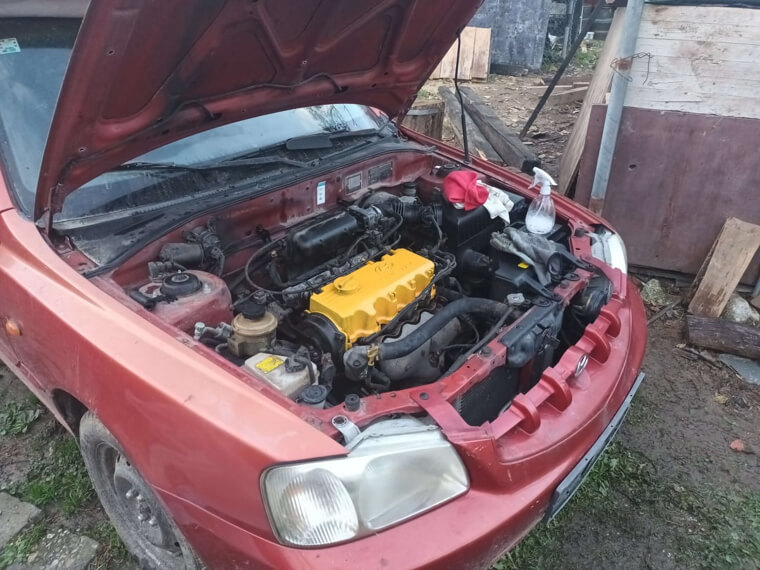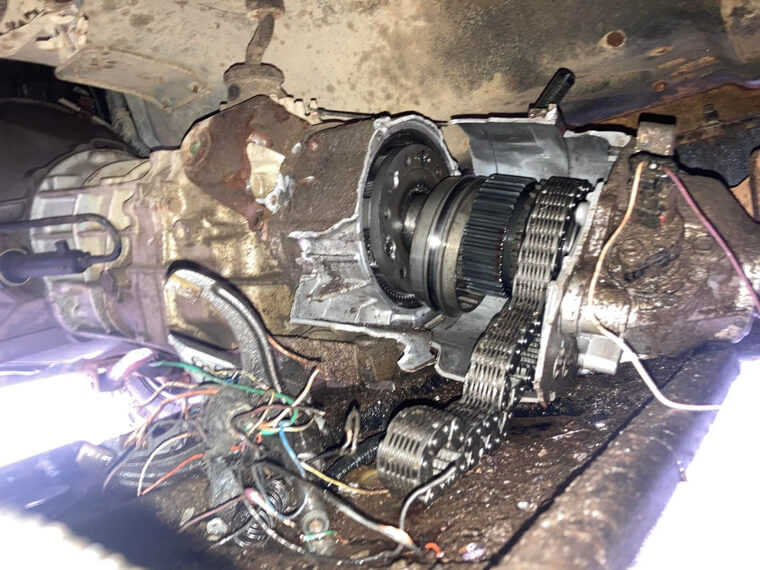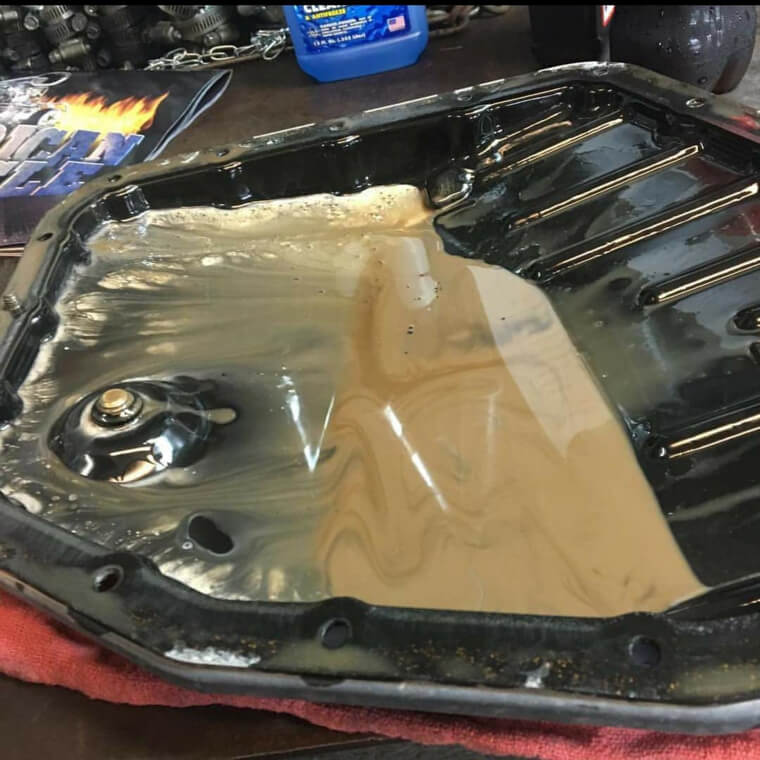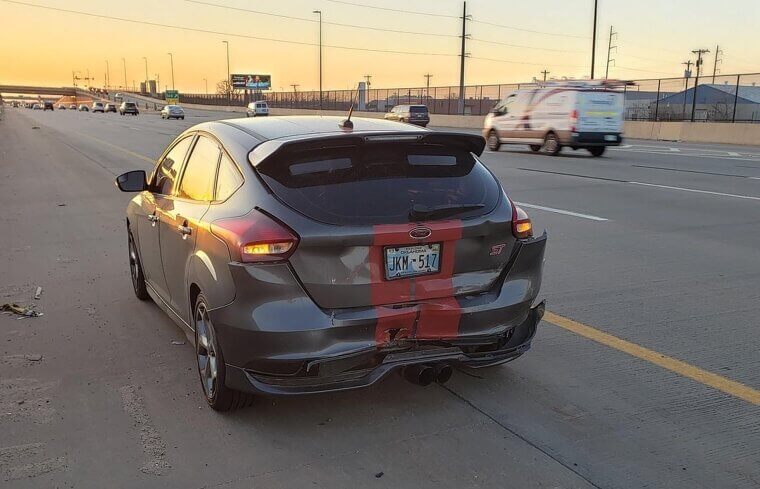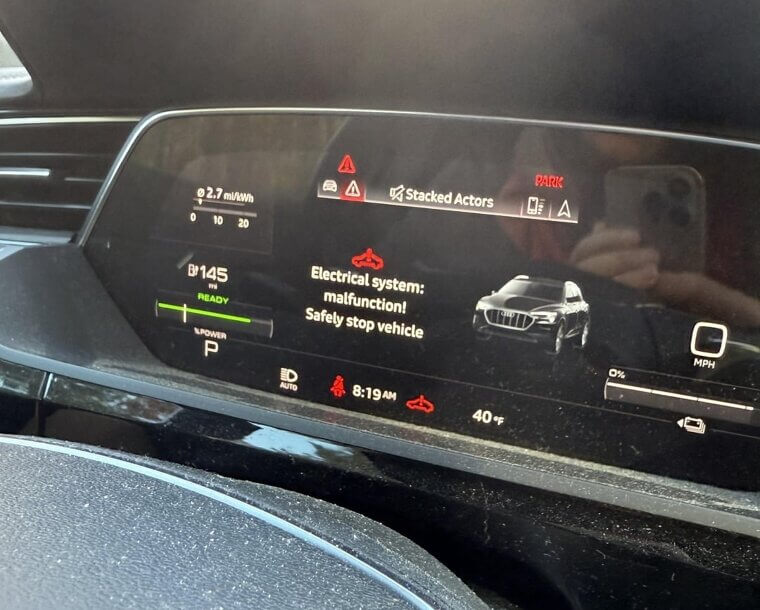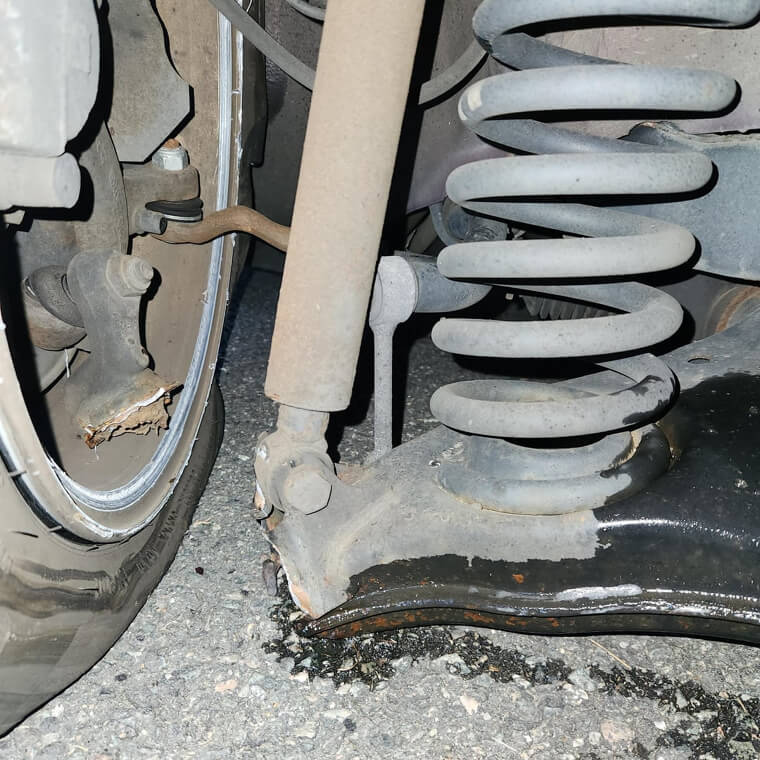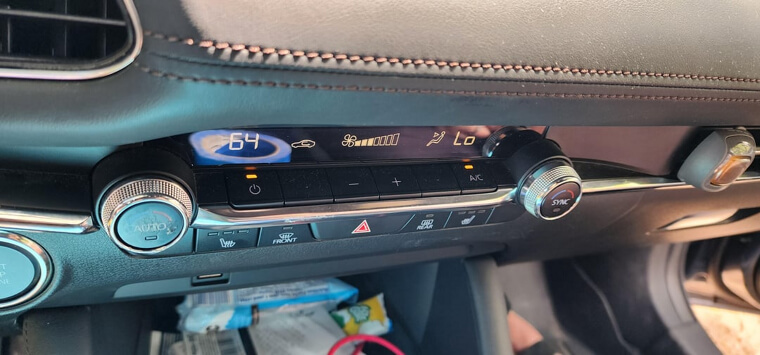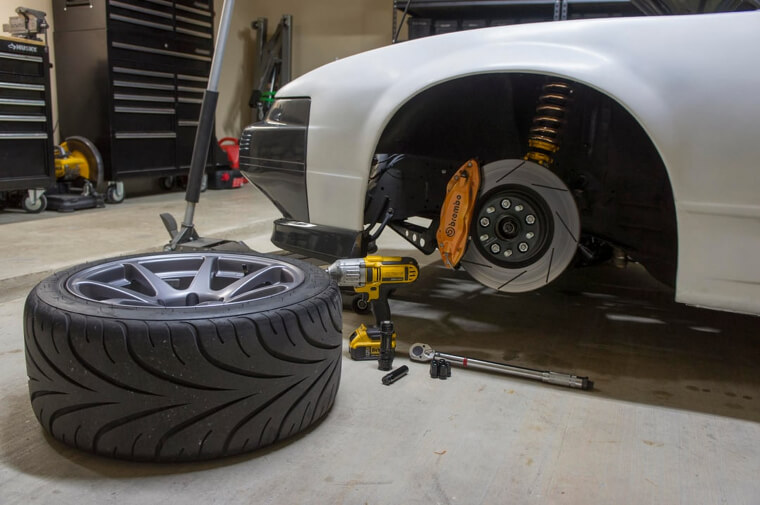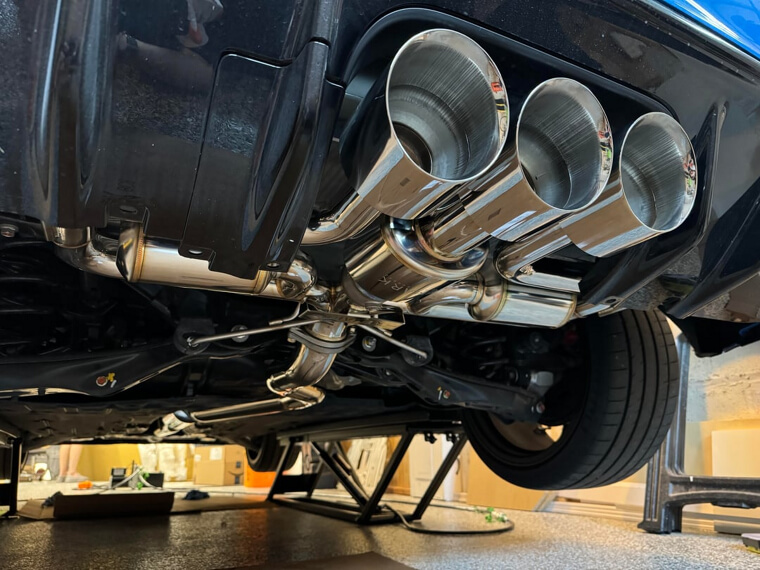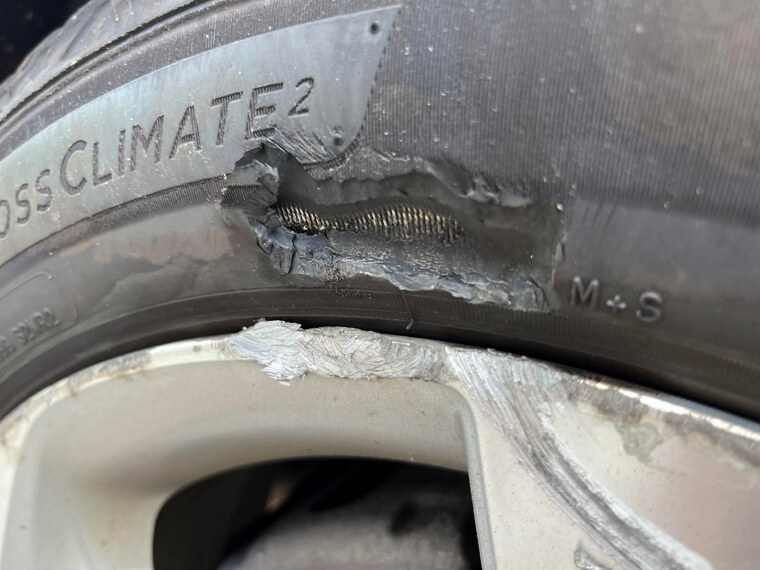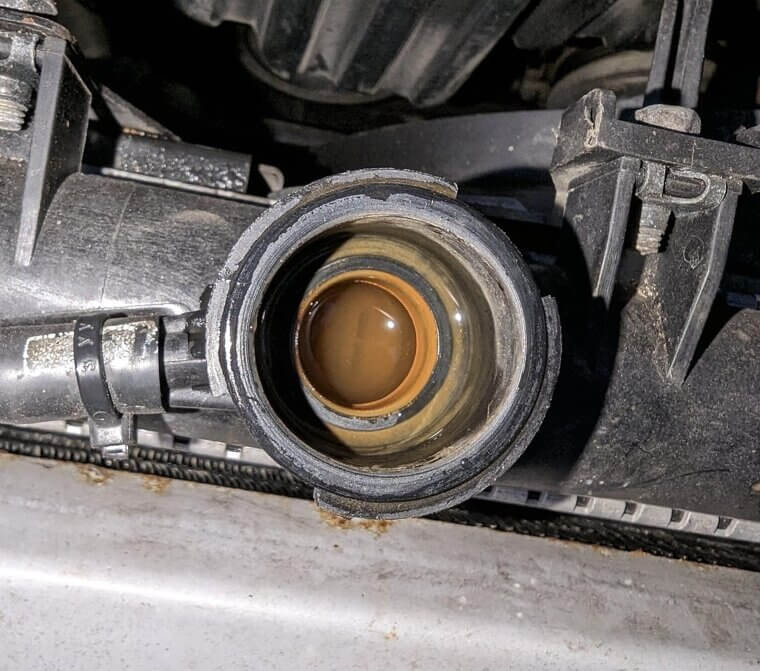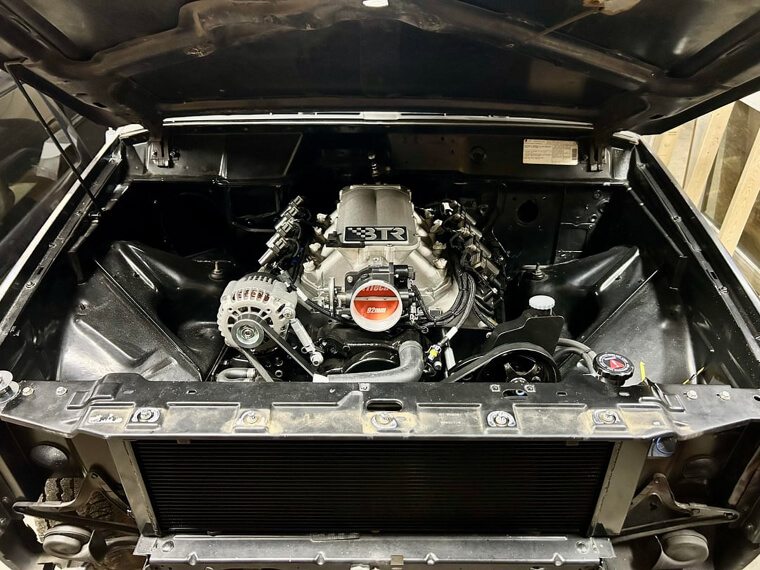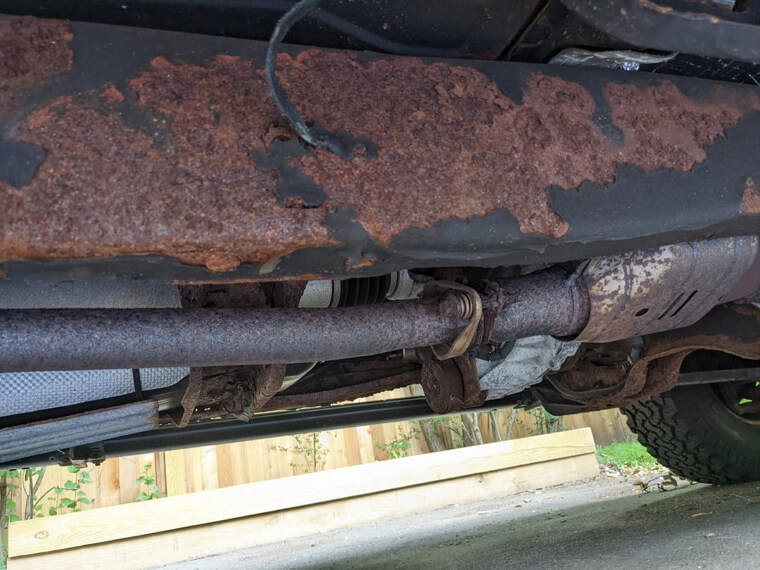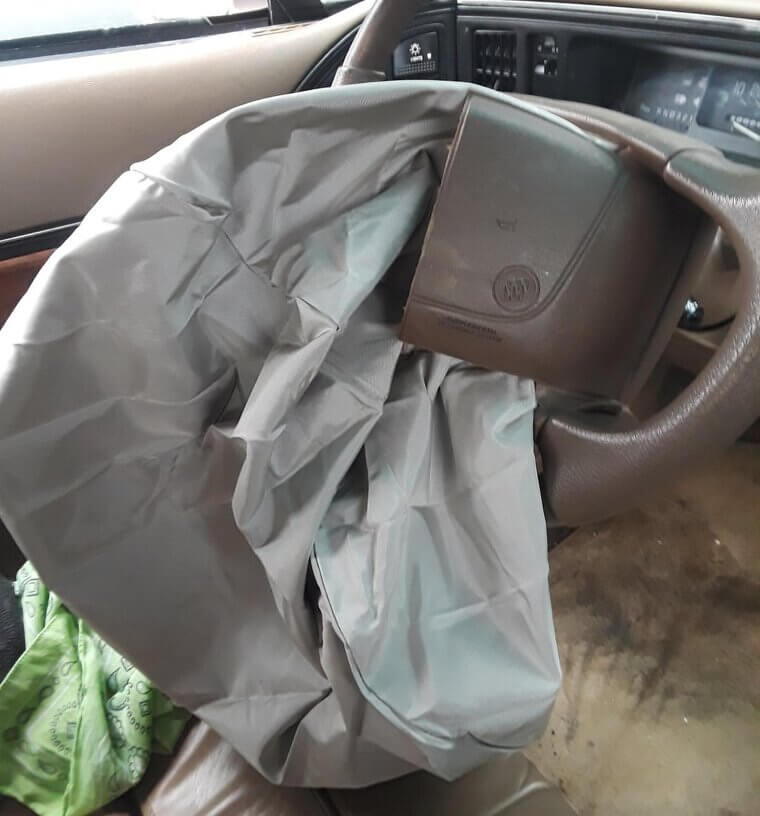Hidden Engine Problems
A clean-looking engine does not always mean it is healthy. Sellers sometimes wash the engine bay to hide oil leaks or coolant residue. A quick inspection usually stops at checking fluid levels, missing subtle signs of trouble like low compression or failing gaskets. Without performing a compression test or using diagnostic equipment, it is impossible to detect internal wear. Minor oil leaks may indicate bigger issues such as head gasket failure or valve seal problems. Buyers should listen for knocking, ticking, or rough idling, and watch for smoke or unusual smells from the exhaust. A mechanic with diagnostic tools can detect misfires and worn components long before they become catastrophic. Hidden engine problems are among the most expensive surprises after purchase, so they deserve extra attention.
Transmission Damage
A car can appear to shift smoothly during a short test drive and still have major transmission issues lurking beneath the surface. Basic inspections often stop at checking fluid levels and color, which is not enough to reveal problems such as internal wear, slipping gears, or delayed shifting. Some sellers replace the transmission fluid just before selling to hide warning signs. Unless the mechanic performs a diagnostic scan and tests the transmission under stress, these issues go unnoticed. Once you buy the car, symptoms can appear quickly, leading to costly repairs that often exceed three thousand dollars. Watch for jerky acceleration, burnt-smelling fluid, or unusual noises when changing gears. Asking for a full road test and electronic scan is the only way to catch transmission problems early.
Flood or Water Damage
Flood damage can ruin a vehicle without leaving obvious signs. Many sellers clean interiors, replace carpets, or spray air fresheners to disguise the smell of mildew. A basic inspection might miss moisture in wiring harnesses, seat tracks, or under carpets. Water exposure causes corrosion that leads to electrical failures, short circuits, and rusted components months later. Inspectors should check under floor mats and inside the trunk for dirt residue or moisture. Headlights, connectors, and door sills often reveal hidden rust if the car has been submerged. Even if everything seems fine during a short test drive, lingering dampness can destroy sensors and modules over time. Always request a flood history report and avoid cars from flood-prone regions unless they come with complete documentation.
Frame Damage
A vehicle with frame damage can look perfect on the outside but hide serious structural problems that affect safety. Sellers often repair and repaint damaged panels to disguise past accidents. A standard inspection might note cosmetic issues but fail to check the frame alignment. Bent frames can cause uneven tire wear, poor handling, and alignment problems that keep returning even after service. Repairing a damaged frame is expensive and never fully restores the car’s strength. Warning signs include uneven panel gaps, doors that don’t close cleanly, or new paint on one section of the body. Buyers should insist on a lift inspection and a frame measurement report. Car history services like Carfax help but do not catch every unreported collision. Skipping this step can lead to years of driving an unsafe and unstable vehicle.
Electrical System Faults
Modern cars rely heavily on complex electronics, but most basic inspections focus on mechanical parts instead. Faulty wiring, weak alternators, or failing sensors can cause intermittent problems that do not trigger a check-engine light. Many vehicles develop small electrical shorts that drain the battery or disable key systems like airbags or ABS. Moisture or poor-quality aftermarket installations often cause these issues. A brief inspection might confirm that lights and accessories work but cannot detect deeper faults. Ask for a diagnostic scan of the vehicle’s electronic systems to reveal stored error codes. If the inspector lacks this equipment, schedule an evaluation with an electrical specialist. Ignoring these hidden faults can result in sudden breakdowns or expensive module replacements later.
Worn Suspension Components
Suspension parts wear slowly, making them hard to spot during a quick inspection. A car might drive smoothly for a short trip, yet its shocks, struts, or control arm bushings could already be failing. Most inspectors only look for visible leaks or damage, not the subtle looseness that affects steering and stability. Worn suspension parts lead to uneven tire wear, clunking noises, and longer stopping distances. A mechanic should lift the car and check for play in each joint, along with signs of corrosion around bolts and bushings. Replacing suspension components can be costly, especially if several parts fail together. A vehicle that feels “floaty” or unstable at highway speeds often has deeper suspension issues that basic inspections miss entirely.
Air Conditioning and Climate Control Issues
During a short inspection, the air conditioning might blow cold air, but that does not mean it will keep working. Leaking refrigerant, failing compressors, or blocked blend doors often go unnoticed during quick tests. These issues tend to worsen with time and cost hundreds or even thousands of dollars to fix. Because A/C systems are sealed, minor leaks may not be visible. Ask the inspector to run the system for at least ten minutes, testing both hot and cold air settings. Listen for hissing or clicking behind the dashboard. Uneven airflow, odd smells, or fluctuating temperatures signal deeper problems. A system recharge might mask the symptoms temporarily but will not solve an underlying failure. Always test climate control thoroughly before buying.
Brake System Problems
Brakes can feel fine on a test drive while still hiding problems. A mechanic may check pad thickness and rotor condition, but that alone does not confirm system health. Internal corrosion, contaminated brake fluid, or sticking calipers can cause uneven braking or premature wear. Most inspections skip fluid testing, even though moisture buildup reduces braking performance and damages components. Ask for a brake fluid test and a close look at hoses and lines. If the brake pedal feels spongy or pulses during braking, something is wrong. Repairing a neglected brake system can be expensive and dangerous to ignore. An in-depth inspection ensures the car can stop safely under all conditions.
Exhaust System Issues
Small leaks in the exhaust system often go unnoticed during a quick inspection, especially if the car is not lifted. These leaks can allow carbon monoxide to enter the cabin, posing serious health risks. Rusty pipes, cracked joints, or missing heat shields are common problems that basic checks overlook. The exhaust system also affects fuel efficiency and engine performance, so even minor leaks can lead to higher running costs. Inspectors should check for discoloration, unusual smells, or vibrations near the muffler and catalytic converter. Exhaust components are costly to replace, especially when corrosion spreads to surrounding parts. A complete undercarriage inspection is the only reliable way to catch these hidden dangers.
Tire and Wheel Damage
Tires and wheels can look fine at a glance yet hide serious flaws. Internal tire damage, sidewall cracks, or unseen bends in the wheels can cause vibrations or blowouts. Basic inspections measure tread depth but rarely check tire age or balance. Tires more than six years old, even with deep tread, may fail without warning. Poor alignment or worn suspension often causes uneven wear that inspectors overlook. Always ask for the tire manufacturing date and an alignment report. Bent wheels from potholes or curbs can also affect handling and safety. Replacing damaged tires and wheels adds up quickly, so a detailed inspection saves money and stress.
Leaking or Worn Gaskets
Many basic inspections miss small oil or coolant leaks because they check only visible surfaces. Gaskets that seal the engine, transmission, or cooling system can degrade slowly and cause gradual fluid loss. Over time, those leaks lead to overheating, oil contamination, or mechanical damage. Some sellers clean the engine bay to hide residue before showing the car. A thorough inspection should include looking underneath for fresh drips or dampness. Mechanics can use UV dye or pressure tests to find hidden leaks. Catching these early prevents costly breakdowns and ensures the car stays reliable. Ignoring them often results in bigger repairs within months of ownership.
Power Steering Problems
Power steering systems can mask issues until the car is driven for an extended period. Fluid levels may appear normal during an inspection, but internal pump wear or small leaks can go unnoticed. When the steering starts to feel heavy or makes whining noises, damage has already begun. Some systems use electronic assist, which can fail without warning. Inspectors should check for smooth, consistent movement when turning the wheel at low speeds. Fluid stains near the reservoir or steering rack indicate a leak. Because steering directly affects safety, any hesitation or noise should be treated seriously. A deeper diagnostic test is worth the extra time.
Cooling System Failures
Basic inspections often stop at checking coolant color and level. That is not enough to detect weak water pumps, failing thermostats, or small leaks in hoses and radiators. Cooling systems degrade gradually, and symptoms appear only under stress. Overheating can destroy an engine quickly, yet most test drives are too short to reveal it. Mechanics should perform a pressure test to verify the system holds coolant. Watch for crusty deposits near connections or a sweet smell from the engine bay, both signs of leaks. Replacing major cooling components can be expensive, but preventive testing during inspection helps avoid major engine damage later.
Rust Beneath the Surface
Rust can hide under the paint, inside doors, or on the frame where it is difficult to see. A car may look flawless but still have structural corrosion developing underneath. Moisture trapped in seams or wheel wells leads to decay that spreads over time. Basic inspections focus on visible areas and often skip a detailed undercarriage check. Rust weakens suspension mounts and brake lines, creating safety hazards. Run your hand along lower door edges and lift trunk mats to look for bubbling or flaking metal. In regions that use road salt, a full rust inspection is essential. Repairing corrosion is costly, and untreated rust can shorten a car’s life dramatically.
Hidden Airbag or Safety System Issues
Airbag systems rely on sensors and wiring that can fail silently. Some sellers replace deployed airbags with fake covers or remove warning lights from the dashboard. A basic inspection might confirm the lights work during startup but not verify the system itself. Mechanics should scan the car’s computer for airbag fault codes and inspect seatbelt tensioners. Missing or non-functional safety equipment puts lives at risk and reduces resale value. Replacing airbag modules and sensors is expensive, so discovering these problems after purchase can be devastating. Always ask for a diagnostic scan to confirm the entire safety system is operational before buying any used vehicle.

